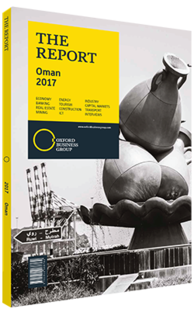AbdulRazak Ali Issa, CEO, Bank Muscat, on developments in the banking and financial sectors: Interview

Interview: AbdulRazak Ali Issa
What opportunities do you see for synergy between the financial sectors of Oman and Iran?
ABDULRAZAK ALI ISSA: Bank Muscat views the trade outlook and bilateral investment between Oman and Iran as positive and is keen on seizing this opportunity for growth. Oman’s modern infrastructure and global investment environment serve as incentives to foreign investors, backed by supportive legislation to regulate and protect investment. The strategic geographic location and stable environment of the sultanate position the country as a trading and investment centre.
What are your expectations for the continued development of Islamic financial services?
ISSA: The Islamic banking sector in Oman has done very well in the last three years and is expected to continue performing well. Islamic banking provides alternative products and services, and also plays a role in encouraging competition in the market. Meethaq, the largest bank in Oman, is contributing significantly to the growth and development of the Omani banking sector, as the country is witnessing an upswing in Islamic finance and investment compatible with sharia law. There is a growing interest among retail and corporate clients to take advantage of opportunities offered by Islamic banking and finance. By providing a new source of funding, large commercial businesses and sukuk (Islamic bonds) will be critical for the growth of Islamic finance in Oman.
To what extent do you think the banking and financial sectors would benefit from consolidation and alternative products ?
ISSA: The banking and financial sector in Oman serves as a pillar of the national economy. Sound macroeconomic policies, a stable financial system and fine-tuned monetary policy measures support the financial sector, which has witnessed high levels of deregulation, transparency and technological improvement. As such, the banking sector continues to record strong growth due to the government’s focus on economic diversification and development. Given the number of players and the size of the market, consolidation of the banking sector is required. The government and the Central Bank of Oman have always encouraged this, but for the most part mergers are driven by shareholders and management.
The banking sector has been revolutionised by an onslaught of new technologies and a widespread change in the regulation governing the use of technology. In an attempt to optimise services and minimise costs, banks are migrating towards around-the-clock service, and customers are enjoying the greater sense of freedom that this creates. Banks are rolling out various new products in this regard, including mobile banking, internet banking and 24/7 call centres. In a bid to drive even greater differentiation from the competition, banks in Oman are increasingly adopting alternative banking and finance channels.
How would you characterise the health of the banking sector in Oman?
ISSA: Banks have continued to register steady growth. At the end of the third quarter the total outstanding credit extended by banks stood at OR21.8bn ($56.6bn), an 11% rise over the previous year, as credit to the private sector increased by 13.2% during the period ending in September 2016. Total deposits showed a 4.9% growth and private sector deposits grew by 6.5%.
Non-performing-loan levels have not increased much in Oman in the last two years even though the oil price was low. The rebound in oil prices is likely to gradually improve business sentiment and boost consumer confidence across the sultanate. However, companies should wait to see whether the price level can be sustained and remain cautious on any new spending and investments. Confidence will improve only gradually as people have become risk-averse.
You have reached the limit of premium articles you can view for free.
Choose from the options below to purchase print or digital editions of our Reports. You can also purchase a website subscription giving you unlimited access to all of our Reports online for 12 months.
If you have already purchased this Report or have a website subscription, please login to continue.

